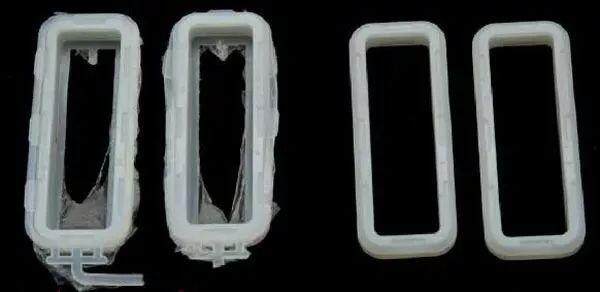Erreur de format d'e-mail
emailCannotEmpty
emailDoesExist
pwdLetterLimtTip
inconsistentPwd
pwdLetterLimtTip
inconsistentPwd

Offer Technical Support and Customized Solutions
The company is committed to creating new and improved plastic materials to meet the evolving demands of the market.

Resolving Flash and Burrs in Engineering Modified Plastic Injection Molding
Introduction:
Flash and burrs are undesired phenomena that occur during the injection molding process of engineering modified plastics. They are excess materials that overflow at the mold parting line, ejector pin holes, vent holes, and other areas. In this blog, we will explore fifteen common causes and their corresponding solutions that can help address issues related to flash and burrs in the injection molding of engineering modified plastics. Hopefully, this information will be useful in providing effective solutions to these problems.
-
Poor closure of mold parting line:
Cause: Insufficient mold clamping force
Solution: Increase the mold clamping force and correct the mold parting line to ensure a tight fit. -
Excessive clearance between sliding parts of the cavity and core:
Cause: Large gaps between sliding components of the mold cavity and core
Solution: Polish the sliding areas of the cavity and core to achieve a tight contact. -
Weak mold strength or rigidity, leading to local deformation and gaps in the mold cavity during the molding process:
Cause: Inadequate mold strength or rigidity
Solution: Adjust process parameters to minimize internal mold pressure. In severe cases, consider remaking the mold, replacing mold materials, or modifying the mold structure. -
Poor parallelism of the mold, resulting in deformation and bending:
Cause: Insufficient mold parallelism
Solution: Repair or remake the mold to ensure proper parallelism. -
Unidirectional force on the mold or inadequate compression during installation, causing uneven filling of individual mold cavities:
Cause: Improper force distribution or insufficient compression during mold installation
Solution: Re-adjust mold installation to ensure proper compression and repair the sprue. -
Inadequate size of the gate in multi-cavity molds, leading to uneven filling:
Cause: Improper gate size in multi-cavity molds
Solution: Adjust the gate size according to the product structure and the length of the runner system to achieve proper filling. -
High injection speed, excessive holding pressure, or prolonged holding time:
Cause: High injection speed, excessive holding pressure, or prolonged holding time
Solution: Reduce the injection speed, lower the holding pressure, and minimize the holding time. -
Excessive injection pressure, inadequate mold clamping force, poor mold mechanism, or non-parallel platens:
Cause: Excessive injection pressure, inadequate mold clamping force, poor mold mechanism, or non-parallel platens
Solution: Adjust the injection pressure and mold clamping force, re-align the mold mechanism, and ensure the parallelism of the injection machine platens. -
Component's projected area exceeds the allowable limit of the injection machine:
Cause: Excessive projected area of the component
Solution: Replace with an injection machine that can accommodate larger projected areas. -
Plastic with excessive flowability, high melt temperature, high mold temperature, or excessive injection speed:
Cause: Plastic with excessive flowability, high melt temperature, high mold temperature, or excessive injection speed
Solution: Replace with plastic with suitable flow characteristics or adjust melt temperature, mold temperature, and injection speed. -
Excessive material feeding:
Cause: Excessive material feeding
Solution: Adjust the material feeding to an appropriate level. -
Foreign particles on the mold surface:
Cause: Foreign particles on the mold parting line
Solution: Clean the mold surface thoroughly. -
Excessive mold temperature:
Cause: Excessive mold temperature
Solution: Adjust the mold temperature. Check the heaters, thermocouples, and temperature controllers of the hot runner mold. -
Damage to the mold parting lines or cavity:
Cause: Damage to the mold parting lines or cavity
Solution: Repair the damaged areas of the mold. -
High temperature inside the hot runner system:
Cause: High temperature inside the hot runner system
Solution: Reduce the temperature inside the hot runner system.
Conclusion:
Addressing flash and burrs in engineering modified plastic injection molding requires careful analysis of the causes and appropriate solutions. By implementing the suggested measures, such as optimizing mold design, adjusting process parameters, and ensuring proper equipment functioning, manufacturers can effectively minimize flash and burr issues, leading to improved product quality and operational efficiency.

